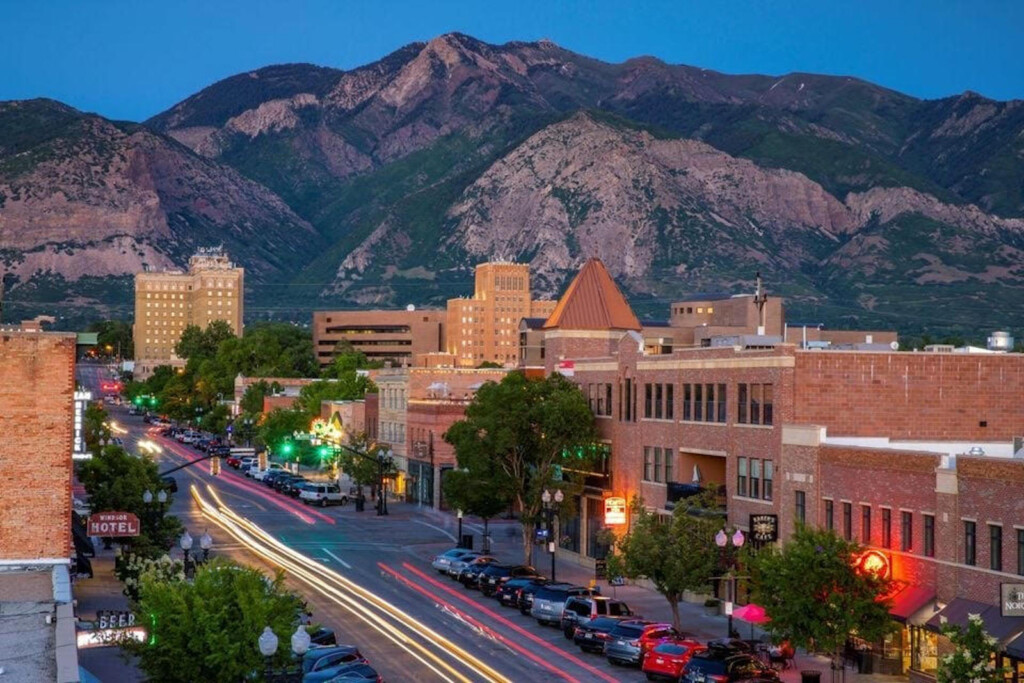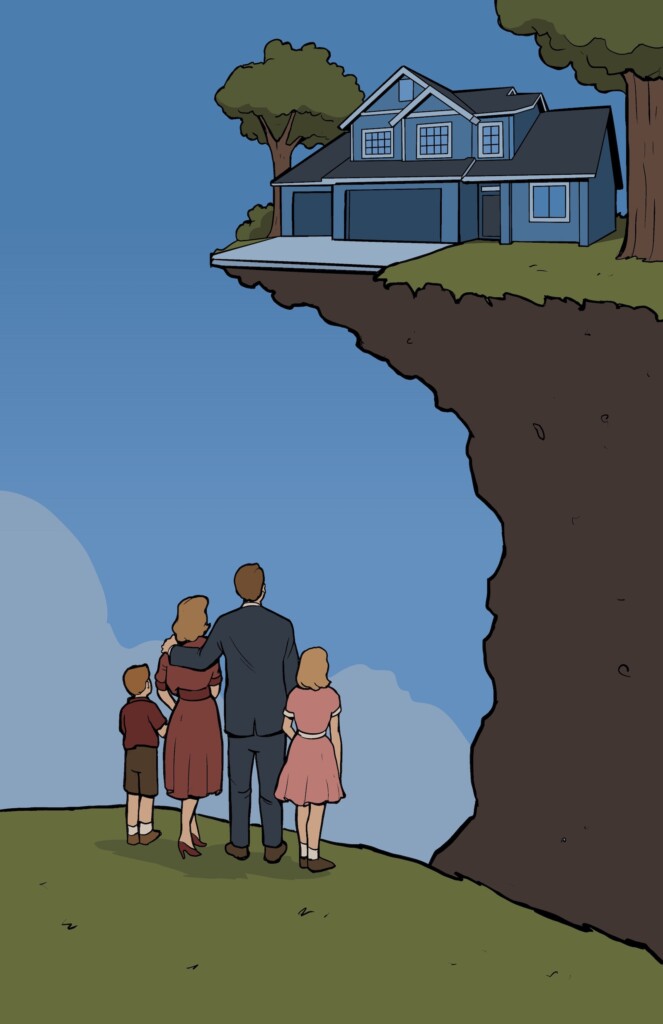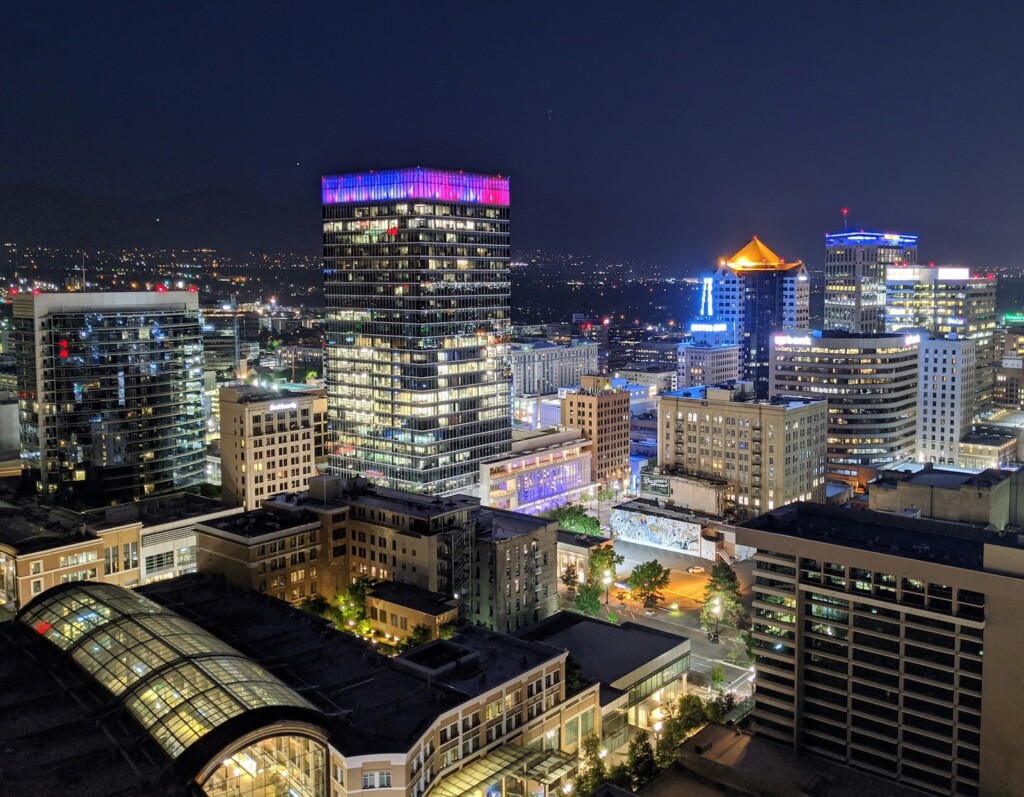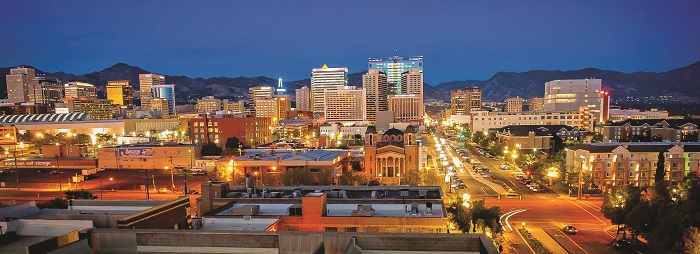
On a typical week day, 23-year-old Mason Medart hops on the first Trax train to his investment research job at Goldman Sachs, puts in up to 16 hours, then works out at the rooftop gym at 4th West Apartments, and sometimes catches the sun setting over the mountains.
A transplant from St. Louis who went to college in Dallas, Medart is happy with his life since moving to Salt Lake City, although he acknowledges that his housing, at well over $1,000 a month, is pricey for a one-bedroom.
“I think it’s worth it though,” he said. “I like that I get to come home to a nice apartment with amenities like the gym. And I don’t have to get in my car and drive home from work.”
Nearby, on a chilly March Monday morning, people began lining up before 9 to get food from the Crossroads Urban Center, 347 S. 400 E., and help with bus fares and utilities. The stark contrast paints a picture of what is occurring downtown—the high-rent residential building boom is threatening to squeeze out not only the low-income and homeless, but the middle and working classes as well.
Hundreds of transplants who earn lucrative salaries from companies such as Goldman Sachs, believe the rents in Salt Lake City are much more reasonable than those in places like New York and San Francisco, where the influx of high-rent properties underscores the shortage and failings of providing affordable and low-income housing to thousands. Although some progress is slowly being made on that front, many people are being left behind because incomes for locals haven’t risen enough to match rocketing rents and home prices for the most desirable downtown locations.
The area stretching roughly from 200 North to 700 South, and 400 West to 700 East, is raging with a plethora of new properties for rent or sale, under construction, or in the planning stages. But if you’re looking for anything under the $1,000 range, east of the 300 West viaduct, even for a studio, good luck.
Couple that with the city’s continuing homeless problem, especially near the Rio Grande District, and you have a quandary: How can lower or no-income residents co-exist with the growing demand for posh upscale apartments?
Glenn Bailey, executive director of Crossroads Urban Center, is worried that gentrification is taking over downtown and can’t believe how many people are occupying expensive units for what he thinks are outlandish rents. Downtown really is becoming uptown, he believes, and the poorer residents will have to go where the wealthier ones don’t desire, often in neighborhoods with higher crime and substandard housing.
“I can’t understand how we can absorb that many [high-rent] units, but they are being leased,” Bailey said. “We actually feel like we’re losing more low-income housing than is being built.”
Take a stroll around the core of downtown and you’ll see what’s trending: luxury complexes with amenities like rooftop pools, gyms and WiFi lounges. The demand for more high-income dwellings is obviously there, spurred largely in part by employers, including Goldman Sachs and Fidelity Investments, expanding in Utah.
And more are on tap, including a $90 million, 24-story apartment building on State Street between 100 and 200 South announced last winter by real-estate developers Cowboy Properties and Boyer Company. Rents would range from about $1,000 to several thousands of dollars per month.
“We are in need of more housing in downtown—housing of all types: market-rate, affordable, condos, apartments, all of it,” said Nick Como, spokesman for the Downtown Alliance. “Housing for all has been a long-standing goal of our Downtown Rising initiative, and I know the city is actively looking for ways to inject affordability into our housing mix downtown.”
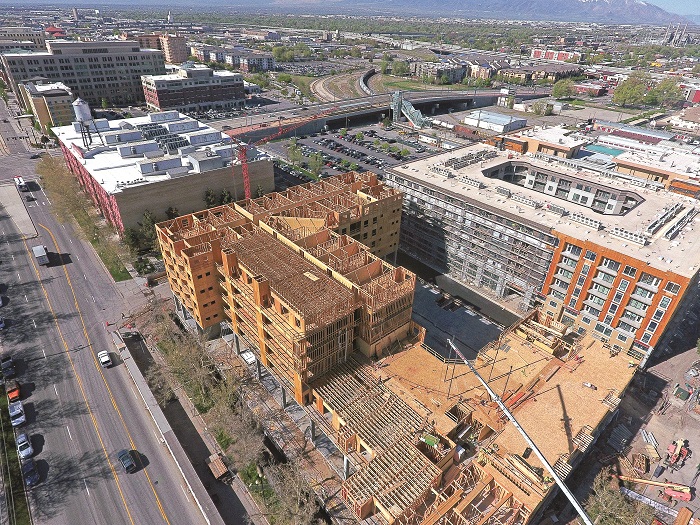
Similar in price to the Cowboy/Boyer development is 4th West (255 North 400 West, the 493-unit complex where Medart lives, which opened in November 2016. Boasting “The best views in Salt Lake City,” the property offers a 543-square-foot studio for $1,161, a $1,720 one bedroom, a $2,509 two bedroom and a $6,716, 1,625 square-foot penthouse with tiled showers, a separate laundry room, quartz countertops and upgraded appliances.
Then there’s the major attraction: a swanky rooftop replete with a pool, hot tub, yoga studio, basketball court, patio grill area, gym and clubhouse, where monthly events such as wine tastings and holiday fiestas are held.
While refusing to give the exact demographics of 4th West’s residents, leasing consultant Laura Enriquez did say most work for companies called preferred employers, who refer them. “They are predominantly from out of state,” she said. Those employers include Goldman Sachs, The University of Utah and Delta Airlines, as well as at least a couple of players on the Utah Jazz.
It’s safe to say, that in touring 4th West that the tenants are paying the high rents more for the amenities and the lifestyle the facilities offer than for peace and quiet. Down the street, closer to the heart of downtown at Liberty Crest Apartments, 150 South 200 East a leasing agent said the property attracts a more staid population who tend to come home and relax.
The apartments and townhomes cost between $1,175 for a one bedroom, to $3,700 for a three-bedroom penthouse. Liberty Crest is one of many of Cowboy’s projects, and some of their properties offer so-called affordable rents that are partially subsidized by government tax credits, but some of the waiting lists are more than a year long. To qualify, renters must make less than 60 percent of the area’s median income.
In the end, the question is whether the middle class, working poor and homeless, will be squeezed out of downtown and gentrification will rule in Salt Lake City’s downtown core.
It’s been a common story, but the positive side effect is that properties in formerly blighted and deteriorating areas are seeing signs of improvement.
Just five miles to the west of downtown Rose Park and Glendale are beginning to look like Sugar House did ten years ago. Millenials who want yards and gardens are still are still able to find deals in these areas. But apartments with upscale amenities and the advantage of “walkable” destinations are in short supply. Wayne Bailey, of Crossroads, said finding a one-bedroom apartment for $800 now, a “steal deal.”
“Our biggest concern is we need to have a city where everyone can afford to live together,” Bailey said. “Utah is still a fairly low-wage state. The low-income have a right to have stable housing options and not be concerned about being homeless.” The good news is that affordability can be found, just on the other side of the tracks.


